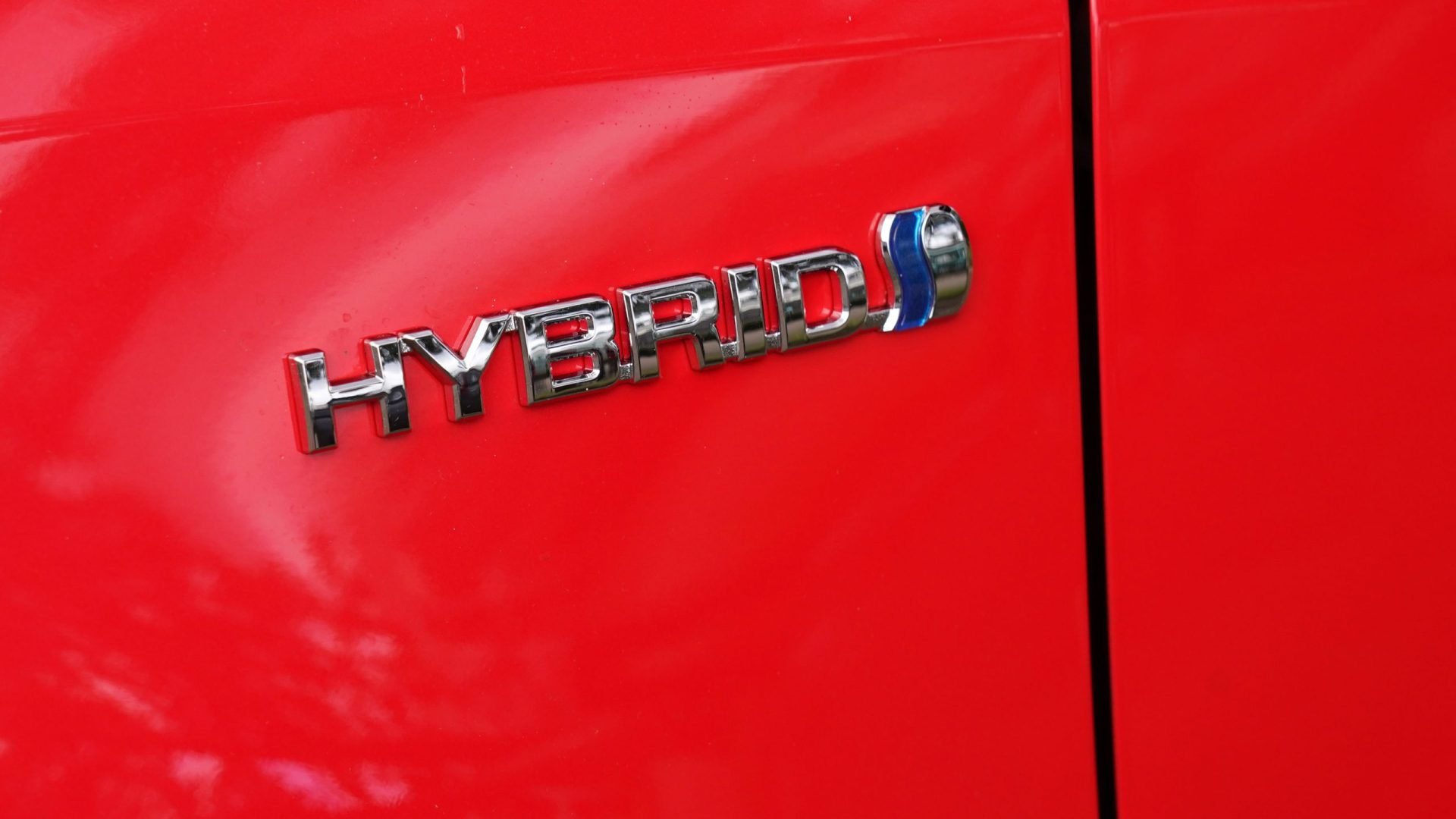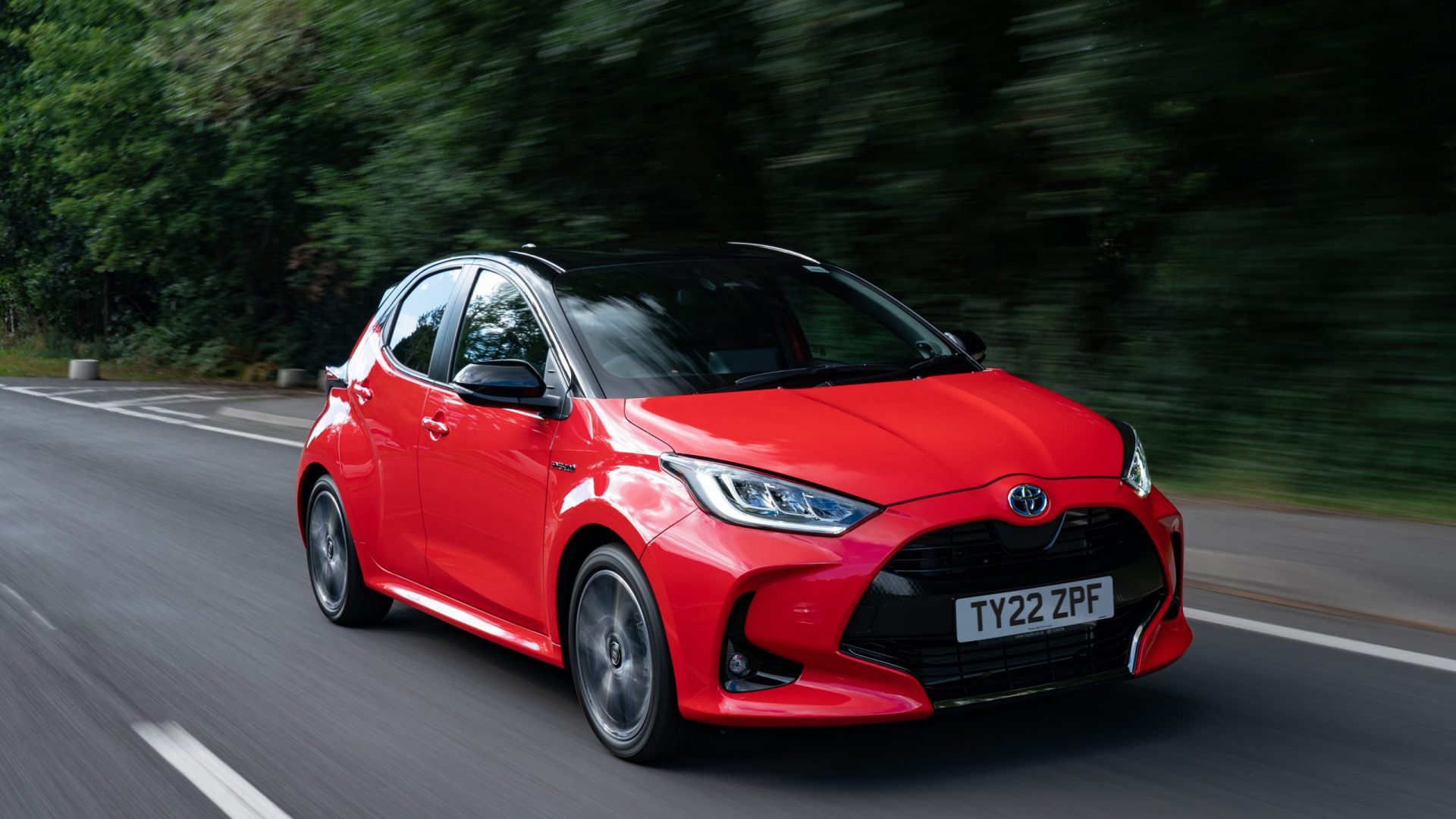Toyota Yaris
2020 - Present

Our verdict
The Yaris has lots to recommend it. It's attractive, efficient, and has a comfortable and relatively spacious interior. However, it's not the most fun to drive, and can be more expensive than some of its rivals.
Good bits
- Hybrid powertrain is incredibly efficient
- Interior is logical and comfortable
- Lots of equipment as standard
Bad bits
- Not all that fun to drive
- Infotainment can feel slow
- Pricey compared to some rivals
Price
£22k - £25k
Made in
France
Engines
Petrol Hybrid
Tell me about it
The Yaris is one of the UK’s most popular small cars – and with good reason. It’s been around since 1998, though this latest model only arrived in 2020.
A lot has changed in the last 20 years: for starters, the way the Yaris is powered. It’s now only available as a petrol hybrid, using Toyota’s tried and tested ‘Hybrid Synergy Drive’ system.
For this generation, Toyota has spent some effort jazzing up the exterior and interior of the Yaris – partially in an attempt to encourage some slightly younger customers into showrooms.
The Honda Jazz and Renault Clio are the only (proper) hybrid cars on sale of this size and price. Beyond that, there are dozens of rivals – the Ford Fiesta, Vauxhall Corsa, Peugeot 208 and Volkswagen Polo to name a few.
Apart from the badges, there’s no difference. The Mazda 2 Hybrid (not to be confused with the regular Mazda 2) is simply a Yaris sold by Mazda. It also gets less standard equipment than the Yaris for the same money.
The GR Yaris is a performance ‘hot hatch’ with 257bhp, four-wheel-drive and a manual gearbox, and bears little relation to the regular Yaris hybrid. Confusingly, the Yaris ‘GR Sport’ is simply a trim level of the regular Yaris hybrid, and is no more powerful.

Exterior
On the outside, the Yaris certainly looks appealing. Toyota has given it a bit more styling flair than they applied to the previous version, with enormous flared wheel arches and – on some models – a selection of two-tone colours.
The Yaris’s proportions haven’t changed much though, meaning this is still one of the smaller cars of its type on the outside. It’s around 13cm shorter than a Ford Fiesta, for example – a useful difference when it comes to parallel parking in a tight space.
There’s no three door ‘regular’ Yaris on sale anymore. Only the GR Yaris – an entirely separate, performance-focussed model – comes with three doors.
Yes. The Yaris is shorter than most of its rivals, and has a reversing camera as standard, making parking easy as pie.

Interior
The Yaris’s interior is typical Toyota: functional, well laid out, and well put together. There’s nothing overly exciting about the way it’s designed, but neat touches like the ‘binocular-inspired’ instrument binnacle do at least add some interest.
Despite being quite a small car, there’s multiple storage spaces across the cabin – including two open cubbies on top of the dash – and the boot isn’t a bad size either, if not as big as some rivals.
There’s plenty of room for passengers too, with space for four adults in reasonable comfort.
It’s also worth noting that, if you want a bit more interior ambience, top-spec ‘Excel’ models have a cream-coloured dashboard and seats – though this might not be to all tastes.
Yes. For a car of this type, it has a relatively high seating position, and a high roof means you don’t have to bend down far to get in. The Yaris Cross – a separate model – is better still.
There’s room inside the Yaris to carry four adults in reasonable comfort – even those with longer legs. The boot isn’t enormous, but similarly sized to rivals like the Ford Fiesta.

Technology & equipment
Toyota has lavished the Yaris with every imaginable bit of equipment – with some caveats.
Even entry-level ‘Icon’ trim gets most things you might want, including a 7-inch touch screen with Apple CarPlay and Android Auto, single-zone climate control, reversing camera and even adaptive cruise control.
‘Design’ models get a larger touch screen, LED headlights and rear electric windows, while the ‘Excel’ adds everything you could possibly imagine: an even bigger touch screen, front and rear parking sensors, keyless entry and dual zone climate control.
The ‘GR Sport’ model gets a mix of ‘Design’ and ‘Excel’ equipment levels, missing out on parking sensors and the larger touch screen.
A panoramic sunroof, head up display and JBL speaker system were all – at one time – available as options. Owing to global supply chain issues these have been discontinued, but do appear on many used Yaris models.
Oddly too, there’s no option for heated seats or steering wheel – something most rivals have offered for years.
The Yaris’s standard stereo – with only four speakers – is a bit tinny. ‘Excel’ models get six speakers, but even this isn’t terribly good. The JBL eight speaker option is much better, but sadly no longer available.
‘Icon’, ‘Design’ and ‘GR Sport’ Yaris models get Toyota’s ‘Touch 2’ operating system, which works well enough but can feel a bit slow. ‘Excel’ models get a newer, snazzier system with a nine-inch screen.

Safety and security
The Yaris is one of the safest small cars money can buy – as evidenced by a five star EuroNCAP safety rating, awarded in 2020.
Toyota really has gone to town with the Yaris’s safety equipment, though of course not all of this is available as standard. A pre-collision system with cyclist and pedestrian detection is included on all models, as is ‘intersection turn assist’, which automatically applies the brakes if a pedestrian crosses your path while turning into a side street.
There’s even a centre airbag for front occupants, which helps stop the driver and passenger from colliding with each other in an accident – something of a first in this size of car.
However, blind spot monitoring and rear cross traffic alert are only available on ‘Excel’ models as standard, or ‘GR Sport’ as part of an option pack.
Only ‘Excel’ models get parking sensors as standard. ‘Design’ and ‘GR Sport’ models have parking sensors available as part of additional-cost option packs.
The Toyota Yaris’s lane keep assist system can be disabled by pressing a button on the steering wheel. The Yaris’s system doesn’t try to physically steer you back into your lane, but simply beeps to alert you.
Only top spec ‘Excel’ and ‘GR Sport’ models have keyless entry and start. Other Yarises have a physical key that must be inserted to start the car.

Engines and performance
Toyota have kept things very simple here – there’s only one engine choice, and it’s a 1.5-litre petrol hybrid, only available as an automatic.
Being a ‘full’ hybrid – or ‘self charging’ hybrid as Toyota calls them – means the Yaris has the ability to drive purely on electricity, albeit not for very long. In practice this doesn’t matter though, as the battery and electric motor are there to help make the petrol engine as efficient as it can be.
The upshot of this is some truly impressive fuel economy – as much as 68.8mpg, depending on the particular flavour of Yaris you select.
Performance is reasonably sprightly, particularly around town, where the electric motor thrusts the Yaris off the line with surprising immediacy. This does tail off a little as speeds increase though, and at motorway speeds the Yaris’s petrol engine can sound – if not necessarily feel – a little strained.
The Yaris has a CVT automatic gearbox. Complicated explanations aside, this means it changes gear incredibly smoothly, but can get noisy when you put your foot down.
The Yaris is a ‘full’, or ‘self charging’ hybrid. This means it can drive on electricity alone, but not for very long, and cannot be plugged in to the mains. In short, it’s a regular petrol car made more efficient.

Ride and handling
The Yaris has previously never been much of a driver’s car, but that’s all changed with the latest model. Toyota has worked hard on the Yaris’s chassis to make it a bit more fun to drive, and it’s worked – to an extent.
It’s still not as fun to throw around as a Ford Fiesta or Seat Ibiza, but it’s not totally unenjoyable either. Those after sportier handling may be tempted to try the ‘GR Sport’ model with its lowered suspension and 18-inch wheels, but these make the ride very firm without really injecting any more thrills.
You’re best off accepting the Yaris for what it is – an efficient, comfortable small car – and leaving hot hatch aspirations to cars like the Ford Fiesta.
‘Icon’ and ‘Design’ models are your best bet, with small(er) 16-inch alloy wheels that don’t transmit bumps into the cabin quite so much. ‘Excel’ cars aren’t quite so comfortable, but still fine. Avoid ‘GR Sport’, which gets sports suspension and 18-inch wheels.

Should I buy a Toyota Yaris?
The Yaris has lots to recommend it. It’s attractive, not bad to drive, and has a comfortable and relatively spacious interior.
It’s also incredibly efficient, with one of the best MPG figures you’ll find in a car of this size. If you frequently drive in urban environments, the Yaris’s hybrid powertrain could save you a fortune compared to a regular petrol car, and is more relaxing behind the wheel too.
The Yaris isn’t the most fun car of its type to drive, though, and is significantly more expensive to buy than many of its rivals.
‘Design’ is the pick of the bunch in the Yaris range, offering a good range of equipment for not (that) much outlay. ‘Excel’ is worth considering if you can spare the extra cash, as it comes with significantly more useful equipment.
